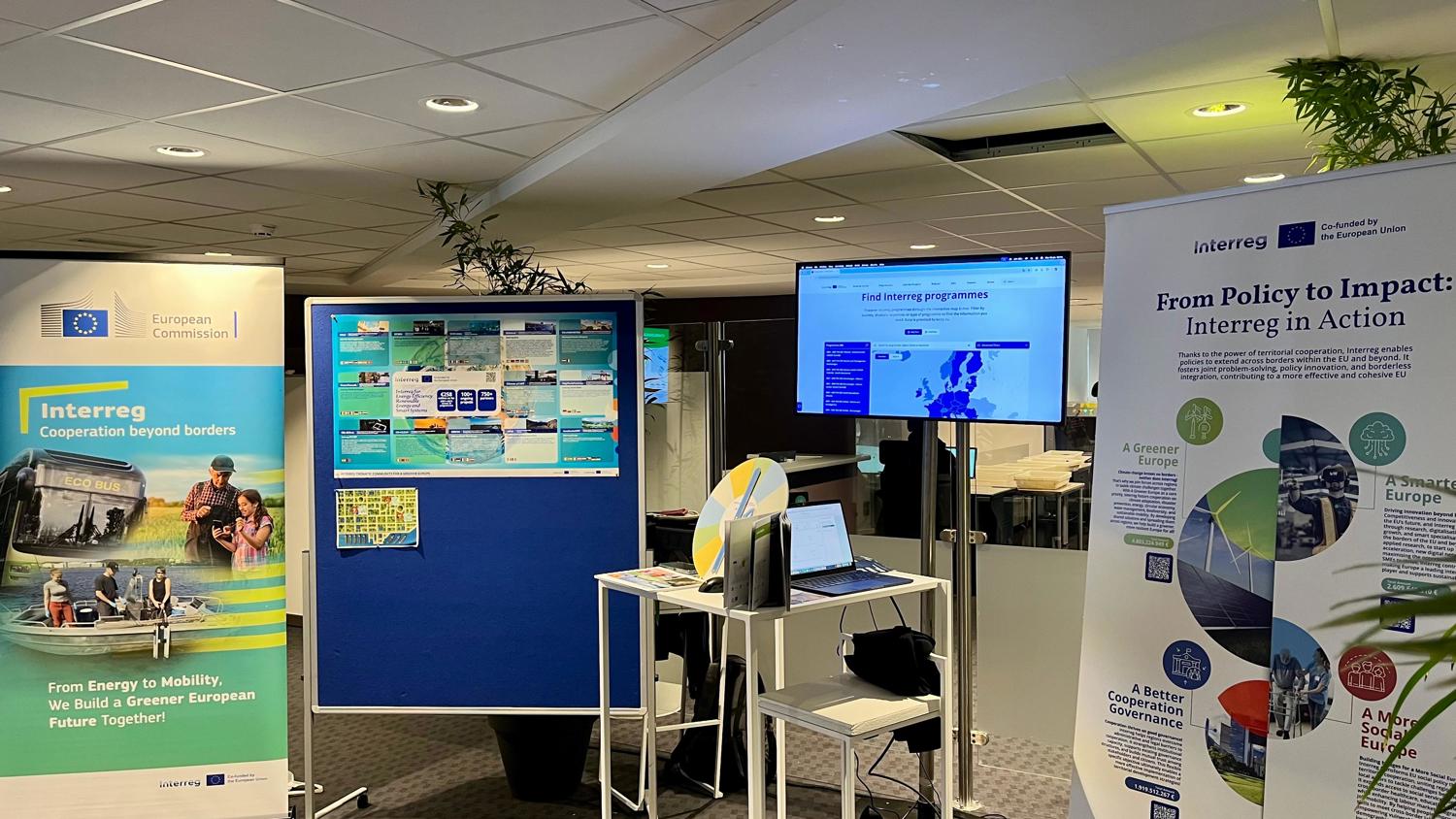
Interreg projects drive energy transition at European Sustainable Energy Week 2025
At the 2025 European Sustainable Energy Week, cooperation took center stage. Thirteen projects from thirteen Interreg programmes joined the EU Energy Fair to present practical solutions for a greener, more inclusive energy transition. All of them were represented under the Interreg Thematic Community for a Greener Europe, coordinated by Interact.
Since 2021, Interreg has supported more than 100 projects focused on energy efficiency, renewables and smart systems, with over €258 million invested through 32 programmes. More than 750 partners - including municipalities, universities, SMEs and citizen groups- are working together across borders to accelerate Europe’s clean energy shift.
Thirteen of these were presented at EUSEW 2025, projects that reflect the diversity of local needs and solutions, tackling energy challenges in infrastructures, mobility, remote areas, and community initiatives.
The importance of energy in public buildings
Public buildings were a central theme. In the Mediterranean, SOLE (Interreg NEXT MED) is improving municipal infrastructure by involving citizens in energy-saving efforts. In the Baltic Sea Region, Climate-4-CAST (Interreg Baltic Sea Region) equips municipalities with digital tools to link emissions targets with financial planning.
Bringing innovation to rural and remote areas
Rural and remote regions are also advancing. In the Arctic, HYBES (Interreg Northern Periphery and Arctic) is testing hybrid microgrids that combine renewables and storage. In North-West Europe, CIRCUS (Interreg North-West Europe) builds local resilience through tools, training and support networks. In Macaronesia, RESMAC (Interreg MAC) promotes renewable energy strategies and community energy to support climate neutrality in these outermost regions.
Helping neighbours form their own energy communities
Empowering citizens is key. In Spain and Portugal, CEL RURAL (Interreg POCTEP) is helping neighbours form their own energy communities. Along the Atlantic coast, SAtComm (Interreg Atlantic Area) develops the digital and legal structures to scale up energy cooperatives.
Mobility and water are part of the picture too.
Clean energy in transport and housing
TRANSBORDER (Interreg Romania-Hungary) upgrades cross-border public transport with cleaner buses. In the North Sea Region, WaterWarmth (Interreg North Sea Region) taps into rivers and canals to provide sustainable heating and cooling.
Innovation continues in coastal and mountain regions. In the Adriatic, CO-CLEAN (Interreg ADRION) installs solar systems on public buildings that also serve as educational spaces.
From small ports in the Baltic to solar energy in the Alps
DigiTechPort2030 (Interreg South Baltic) supports small ports in adopting clean energy systems. In the Alps, APhE (Interreg Alpine Space) merges functionality and design with retractable solar canopies.
Zooming out, AccelerateGDT (Interreg Europe) connects eight countries to help regions support green and digital business clusters.
These thirteen projects are part of a wider movement where cooperation between regions and countries drives local innovation and shared progress. At EUSEW 2025, they showed what Europe can achieve when solutions cross borders.




